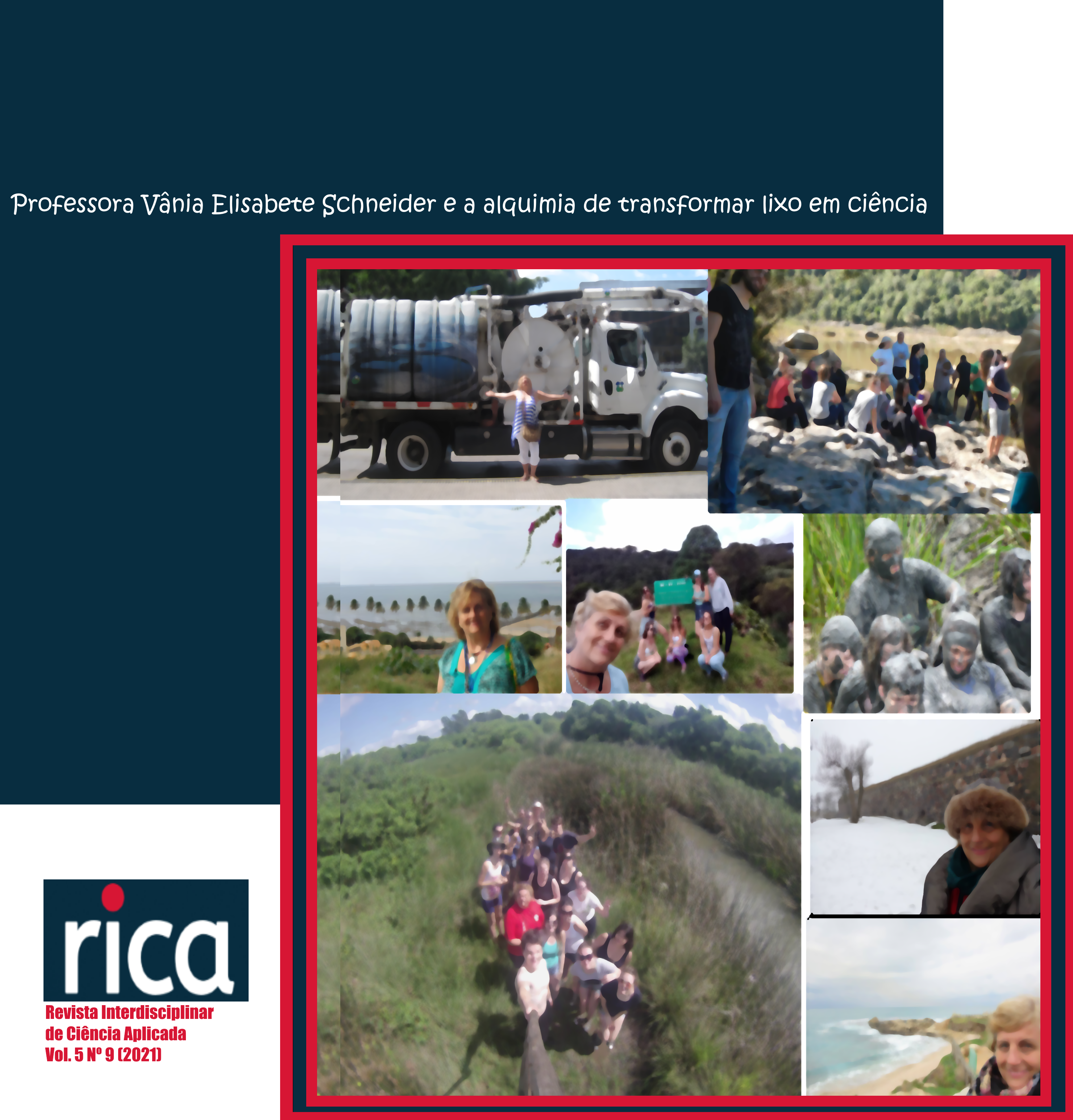Evaluación del porcentaje de austenita retenida en acero inoxidable martensítico din 1.4110 con diferentes intervalos de tiempo entre el temple y el tratamiento criogénico
DOI:
https://doi.org/10.18226/25253824.v5.n9.08Palabras clave:
tratamiento térmico, austenita retenida, acero inoxidable, análisis instrumentalResumen
Este trabajo tiene como objetivo evaluar el porcentaje de austenita que se retiene en la matriz de acero DIN 1.4110, siguiendo los procesos de temple y criogénico en función de la alternancia del intervalo de tiempo entre los dos tratamientos térmicos. Para ello, las muestras de acero se trataron térmicamente en un horno de 7 etapas con atmósfera controlada y enfriamiento acelerado para realizar el endurecimiento. Se definieron cuatro intervalos diferentes entre tratamientos térmicos: inmediatamente, 6, 12 y 24 horas después del revenido. El tratamiento criogénico se realizó con los mismos parámetros en todas las muestras. Se utilizaron pruebas de dureza y metalografía para caracterizar la aleación y la prueba de difracción de rayos X para evaluar la cantidad de austenita retenida en las muestras. Los resultados obtenidos muestran que el tiempo de espera entre tratamientos se refleja directamente en el porcentaje de austenita retenida en el acero. Como extremos de la prueba, se obtuvo el porcentaje de 23,6% para criogénicos realizados 24 horas después del tratamiento de extinción; en cambio, para el tratamiento criogénico realizado inmediatamente después del revenido, el porcentaje fue del 11,9%.
Citas
MENG, F. et al., Role of eta carbide precipitations in the wear resistance improvements of Fe-12Cr-Mo-V-1.4C tool steel by cryogenic treatment. ISIJ International, v. 34, n.2, p. 205-210, 1994.
BARRON, R. F. Cryogenic treatment of metals to improve wear resistance. Cryogenics, v. 22, n.8, p. 409-413, Ago., 1982.
RHYIM, Y.-M. et. al., Effect of deep cryogenic treatment on carbide precipitation and mechanical pro-perties of tool steel. Solid State Phenomena, v. 118, p. 9-14, 2006.
PELLIZARI, M.; MOLINARI; A., Deep Cryogenic Treatment of Cold Work Tool Steel. 6th International Tooling Conference. Karlstad - Suécia: [s.n.]. p. 657-669, 2002.
YUGANDHAR, T.; KRISHNAN, P. K., Cryogenic Treatment and it´s effect on tool steel. 6th International Tooling Conference. Karlstad, Suécia: [s.n.]. 10-13 Set, p. 671-684, 2002.
GOBBI, S. J. et. al. Efeito do tratamento criogênico profundo no desgaste microabrasivo do aço AISI D2. 18º CBECiMat - Congresso Brasileiro de Engenharia e Ciência dos Materiais. Porto de Galinhas - PE - Brasil: [s.n.]. p. 6711-6722, 2008.
SARTORI, C. H.; YOSHIDA, S.; FAGUNDES, M. G., Efeitos do tratamento criogênico na tenacidade à fratura dos aços AISI M2, AISI D2 e aço para trabalho a frio com 8% de Cr. 61° Congresso Anual da ABM. Rio de Janeiro: ABM - São Paulo. p. 3532-3539, 2006.
DAS, S.; DUTTA, A. K.; RAY, K. K., Effect of deep cryogenic treatment on the carbide precipitation and tribological properties behavior of D2 steel. Materials and Manufactuting Processes, v. 22, p. 474-480, 2007.
WIERSZYLLOWSKI, I.; NIEMCZYK, W., The influence of deep cryogenic treatment on precipitation phenomena during tempering and ageing. Defect and Diffusion Forum, v. 283-286, p. 65-73, 2009.
BENSELY, A., SENTHILKUMAR, D., MOHAN LAL, D., NAGARAJAN, G., & RAJADURAI, A., Effect of cryogenic treatment on tensile behavior of case carburized steel-815M17. Materials Characterization, v. 58, p. 485–491, 2007.
HUANG, J.Y., ZHU, Y. T., LIAO, X. Z., BEYERLEIN, I. J., BOURKE, M. A., MITCHELL, T. E., Microstructure of cryogenic treatem M2 tool steel. Materials In: Science and Engineering, v. 339, p.241-244, 2003.
EBONI, G. A., Efeito do Processamento Criogênico na Microestrutura e Propriedades Mecânicas do Aço SAE M2 Temperado e Revenido. Dissertação de Mestrado - Universidade Federal de Santa Catarina, Santa Catarina, 86p., 2010.
COLLINS, D. N., Cryogenic treatment of tool steels. Advanced Materials & Processes. v. 12, p. H23-H29, 1998.
SHACKELFORD, J. F., Introduction to materials science for engineers. 8th e d./Global Edition. Uppler Saddle River: Prentice-Hall, 2015.
CALLISTER, W. D., Ciência e Engenharia de Materiais: uma introdução. Rio de Janeiro: LTC, 2002.
OUTOKUMPU STAINLESS AB., Handbook of stainless steel. Suécia: Outokumpo Oyj, 2013. Disponível em: https://www.outokumpu.com/choose-stainless/stainless basics/handbooks. Acesso em 17 de jul. de 2019.
VERHOEVEN, J.D., PENDRAY A.H., CLARK H.F., Wear tests of steel knife blades. Wear. p.1093-1099, 2008.
RAMOS, L. B., SIMONI, L., MIELCZARSKI, R. G., VEGA, M. R. O., SCHROEDER, R. M., & MAL-FATTI, C. de F., Tribocorrosion and Electrochemical Behavior of DIN 1.4110 Martensitic Stainless Steels After Cryogenic Heat Treatment. Materials Research, v.20(2), p. 460–468, 2017.
SYARIF, J., H. YOUSUF, M., SAJURI, Z., BAGHDADI, A. H., MERABTENE, M., & OMAR, M. Z. Effect of Partial Solution Treatment Temperature on Microstructure and Tensile Properties of 440C Martensi-tic Stainless Steel. Metals, v.10(5), 694, p. 1-14, 2020.
SARTORI, C. H., Influência dos tratamentos térmicos e tratamentos criogênicos na tenacidade do aço rápido AISI M2. Dissertação (Mestrado em Engenharia) – Departamento de Engenharia Metalúrgica e de Materiais, Escola Politécnica da Universidade de São Paulo, São Paulo, 123p., 2009.
YUN D., X. L., Deep cryogenic treatment of high speed steel: microestruture and mechanism. International Heat Treatment and Surface Engineering, v. 2, p. 80-84, 2008.
MELADO A., NISHIKAWA A., FUJIOKA R., VIEIRA E., GOLDENSTEIN H., Efeito da porcentagem de austenita retida nas propriedades mecânicas de um ferro fundido nodular submetido ao processo de têmpera e partição. 70° Congresso Anual da ABM – Internacional, p. 2337-2344, 2015.
CASTILHO W. S., Tratamentos criogênicos nos metais. Revista sitio novo, v. 3, p. 115-126, 2019.
Descargas
Publicado
Cómo citar
Número
Sección
Licencia
Derechos de autor 2021 Fábio Júnior Meurer, Thaís Morato Bueno, Lírio Schaeffer

Esta obra está bajo una licencia internacional Creative Commons Atribución 4.0.
Authors keep the copyright and cede to the journal the right of publishing first. Published works are licensed under a Creative Commons Attribution 4.0 International (CC BY 4.0) license, allowing the sharing of the work with recognition of the authorship and initial publication in this journal.






